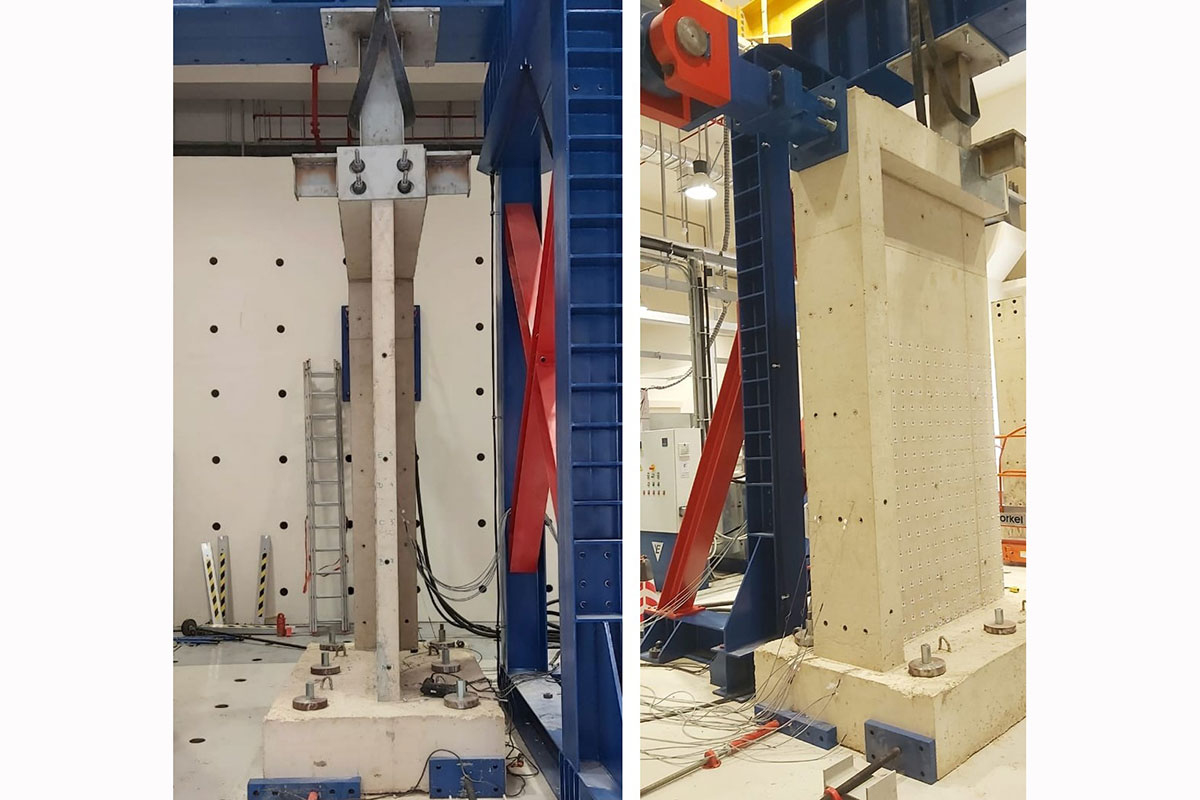Seismic Performance of Slender Concrete Shear Walls with and without Carbon Fiber Reinforced Polymers Laminates
Project Details
- Student(s): Houssam Al Sayegh
- Advisor(s): Dr. Caesar Abi Shdid
- Department: Civil
- Academic Year(s): 2022-2023
Abstract
Shear walls are the main lateral-load-resisting system in reinforced concrete buildings. This study examines the seismic performance of slender, under-reinforced shear walls, and proposes retrofit guidelines to enhance the strength and ductility of this type of wall using carbon fiber-reinforced polymer. The in-plane loading performance of the shear wall specimens was examined before and after the retrofit. Two full-scale shear walls were designed and constructed to simulate shear walls in old buildings in the Beirut, Lebanon area. One of the walls was designated to be a control wall and tested as is, while the other was retrofitted using CFRP laminates. The CFRP layout was designed to provide the missing confinement which is usually supplied by special boundary elements configuration present in buildings designed according to modern ACI specifications. The two walls were tested under reversed cyclic loading using a hydraulic actuator. Force deformation plots were produced for both tests and further specific in-plane and out-of-plane displacements were monitored using two high-performance cameras connected to a data acquisition software. Strain gauges were placed at different levels on the wall rebar to monitor their strain profile and yielding points. The study showed that the retrofitted wall had better performance than the control one. Drift capacity was improved by 17% and longitudinal bar buckling was prevented. Moreover, it was observed that the control wall compression zone was completely crushed at 2.5% drift; whereas, the retrofitted wall reached a drift of 3% with an intact concrete section. The CFRP laminates showed to preserve the concrete core and prevent the buckling of the longitudinal steel bars during cyclic loading. The results of this study will aid in the development of a unified retrofit scheme to enhance the seismic performance of shear walls in old buildings, thus improving their safety in case of a seismic event.
